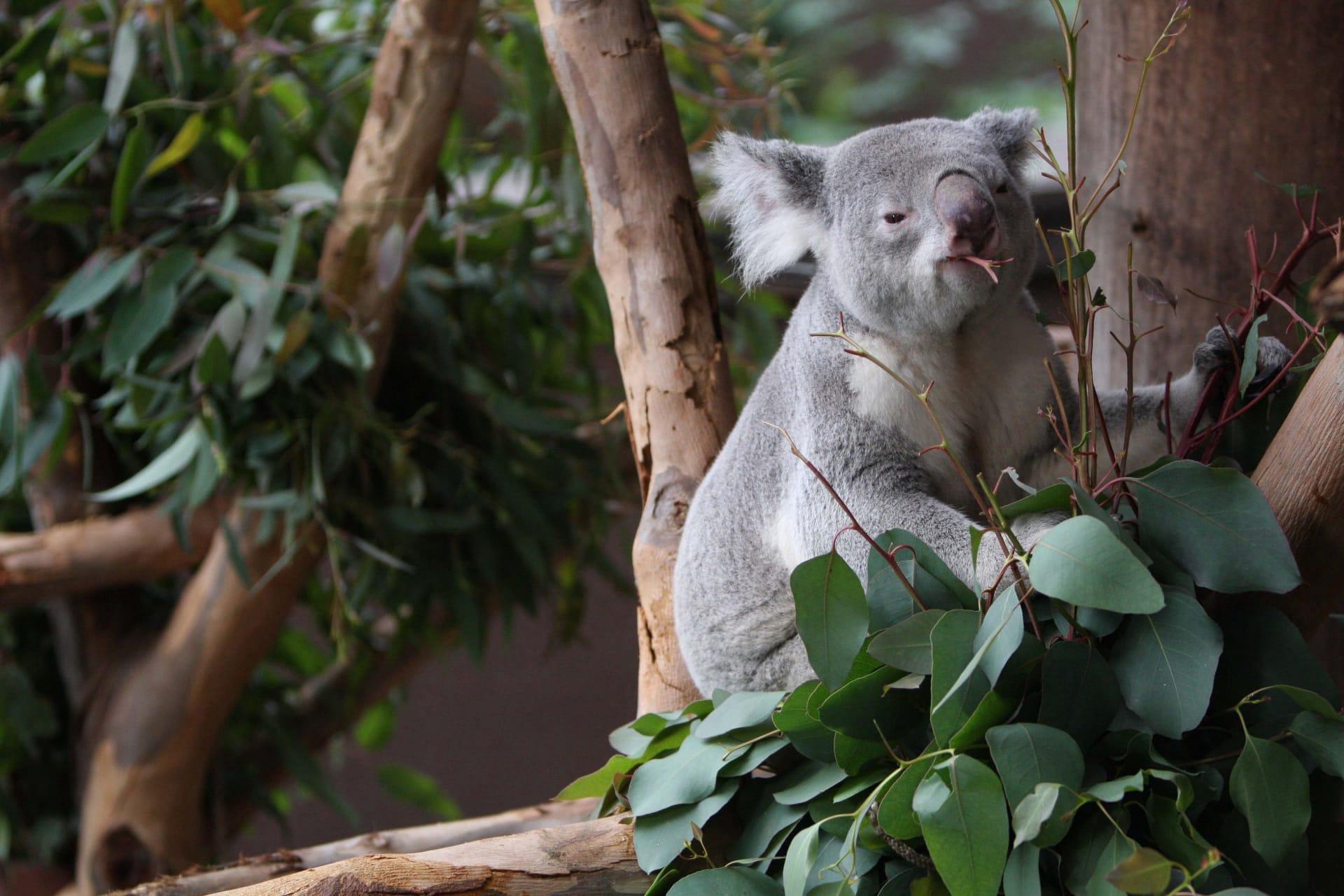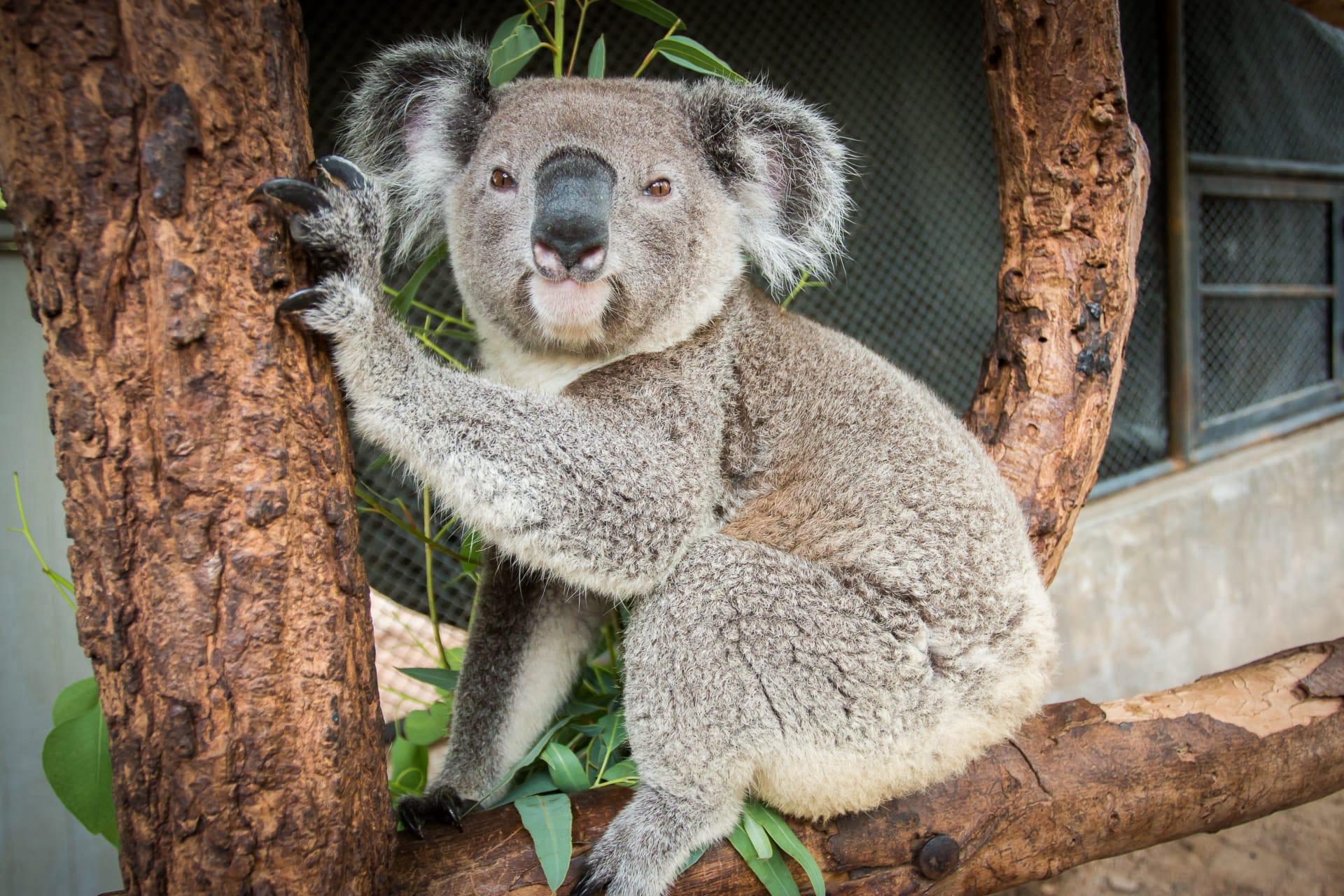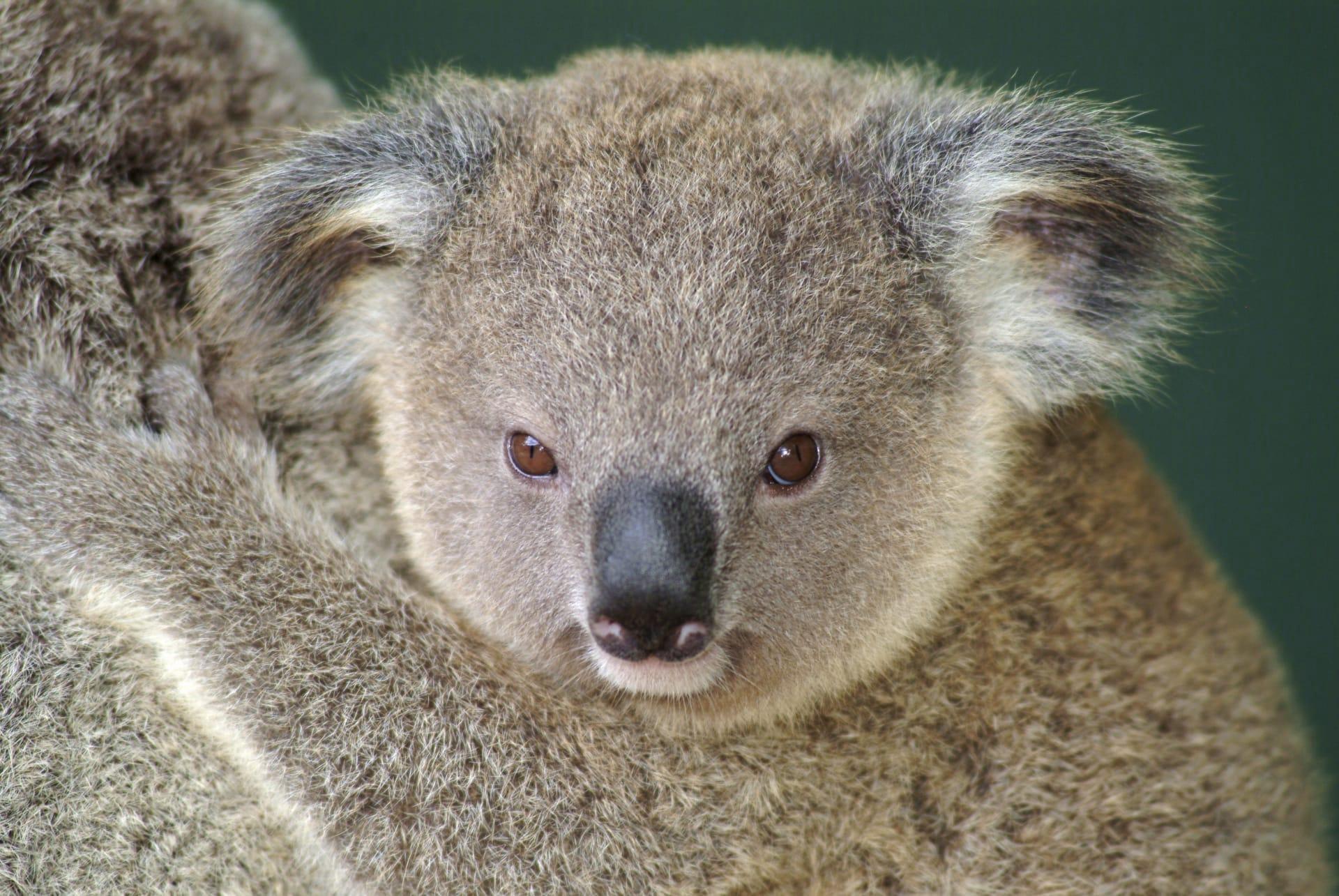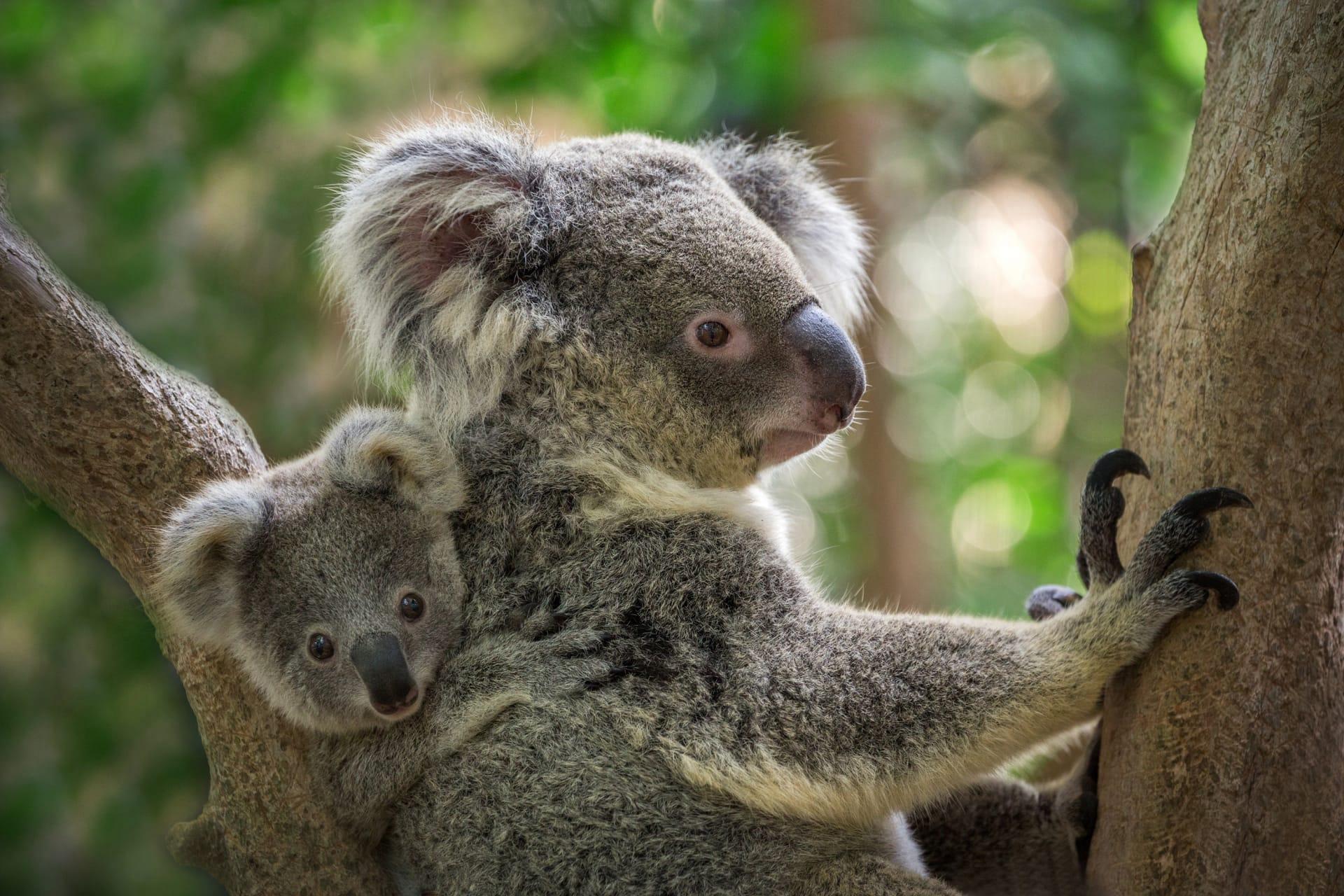Koala Characteristics
- Home /
- Mini Encyclopedia /
- Animal /
- Koala Characteristics
1
Koalas, those cuddly creatures native to Australia, have distinctive physical characteristics. Adult koalas are about 24 to 34 inches in length, with a weight ranging from 9 to 33 pounds. Their size can vary significantly, depending on their geographic location. Females are generally smaller than males. One remarkable aspect of a koala's lifespan is its dependency on the environment and health factors; they typically live around 13 to 18 years in the wild. In captivity, with optimal care, they can live slightly longer.
One of the most unique organs of a koala is its highly specialized digestive system, particularly its stomach. Koalas are herbivores, primarily feeding on eucalyptus leaves, which are tough to digest and toxic to many other animals. Their stomach has a long digestive tract and a special kind of bacteria to break down the fibrous and toxic material in eucalyptus. This adaptation allows koalas to extract the maximum amount of nutrients from their limited diet, making their digestive system a key to survival in their eucalyptus-dominated habitat.

2
Question: Why do koalas sleep so much?
Answer: Koalas are known for their extensive sleeping habits, clocking in about 18 to 22 hours of sleep per day. This is primarily because their diet, mainly eucalyptus leaves, is low in nutrients and high in fibrous content. Digesting this diet requires a lot of energy, leading to their need for long hours of sleep. Additionally, eucalyptus leaves contain compounds that can be sedative, further promoting their sleep-heavy lifestyle. Their sleeping pattern is a crucial adaptation for conserving energy, vital for their survival given the limited nutritional value of their food.

3
Movement is not a koala's strong suit, as they are primarily sedentary creatures. They are adapted for a life in the trees, with strong, muscular limbs and sharp claws to grip tree branches. Koalas move slowly and deliberately, conserving energy. When on the ground, they walk awkwardly on all fours, but in the trees, they are more agile, moving from branch to branch, albeit at a leisurely pace.
When it comes to feeding, koalas are quite selective and spend a significant amount of time eating, about 2 to 3 hours each day. Their diet is almost exclusively eucalyptus leaves, from which they select the most nutritious and tender. Despite the abundance of eucalyptus species, koalas prefer only a few, indicating their picky eating habits. They have a keen sense of smell, which aids in selecting the best leaves. Interestingly, koalas eat enough leaves to meet their water requirements, rarely drinking water directly.

4
Koalas inhabit eucalyptus forests and woodlands in Eastern Australia. Their habitat is defined by the presence of eucalyptus trees, essential for their diet and lifestyle. Koalas require a large number of trees to sustain a healthy population, as they are territorial animals. Habitat destruction, mainly due to urban development and agriculture, poses a significant threat to their survival.
Reproduction in koalas follows a seasonal pattern, typically between October and May. Females give birth to a single joey after a gestation period of about 35 days. Newborns are underdeveloped, about the size of a jellybean, and climb into the mother's pouch for further development. They remain in the pouch for about six months, after which they ride on their mother's back and start to learn about feeding on eucalyptus leaves. Koalas reach sexual maturity at about 3 to 4 years of age, with females often giving birth annually thereafter.

5
Book: "The Secret Life of Koalas" by Australian author Margaret Hawkins, published in the 1990s, delves into the intriguing world of koalas. The book offers insights into their behavior, habitat, and the challenges they face in the wild. Hawkins combines scientific research with engaging anecdotes, making it an informative yet easy read for those interested in these unique marsupials.
Book: "Koala: A Historical Biography" by Australian historian Stephen Jackson, published in the early 2000s, presents a comprehensive look at the history and cultural significance of koalas. Jackson meticulously details the koala's journey from a little-known native animal to an international symbol of Australian wildlife. The book also discusses the conservation challenges and efforts surrounding koalas, providing a well-rounded view of their place in both nature and culture.